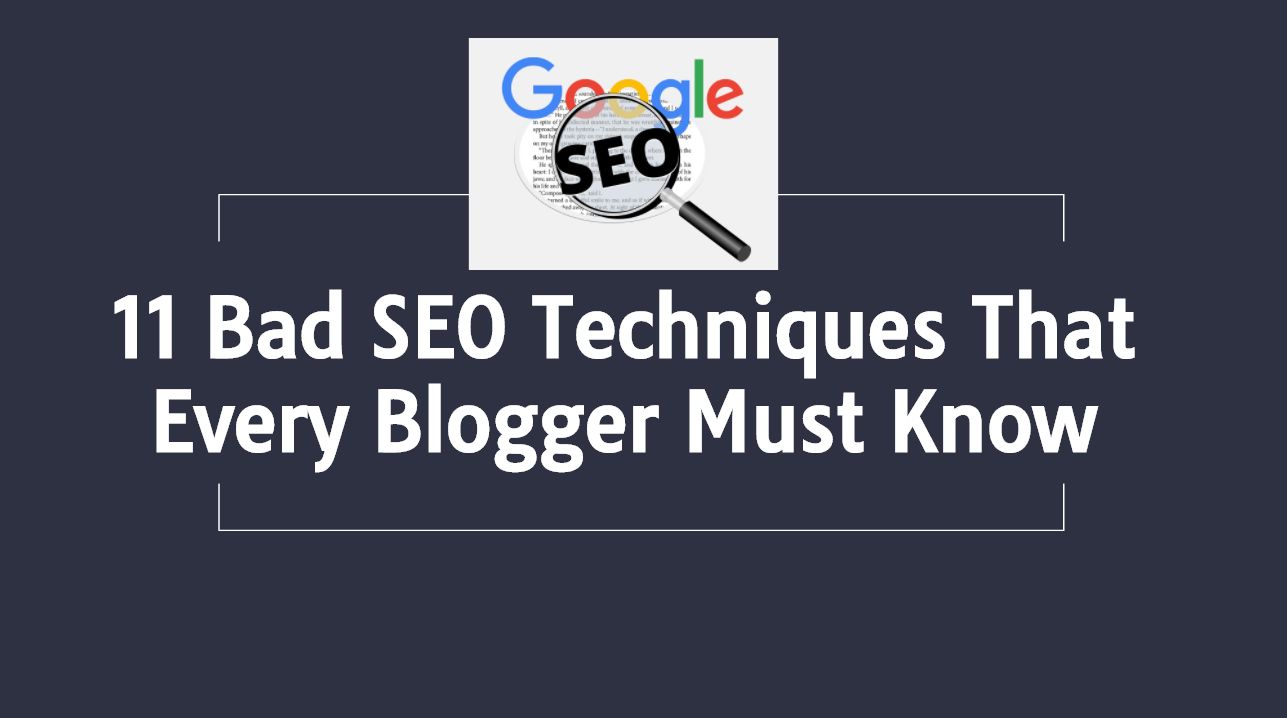

11 Bad SEO Techniques That Every Blogger Must Know-:
1. Using Target Keyword Without Variations-:

This is often done by many bloggers who use only one target keyword in their blog posts which is not a good practice. Use Target Keyword with Variations in a blog post. This SEO technique helps your content to get top rank in search results. Search engines use target keywords, related terms, keyword variations, and synonyms to understand your page topics. If you want to add good keyword variations to your content, use this simple method,
- Head over to Google,
- Type your target keyword
- Scroll the search result, here you will see the best keywords related to the target keyword.

2. Shortening a blog post-:
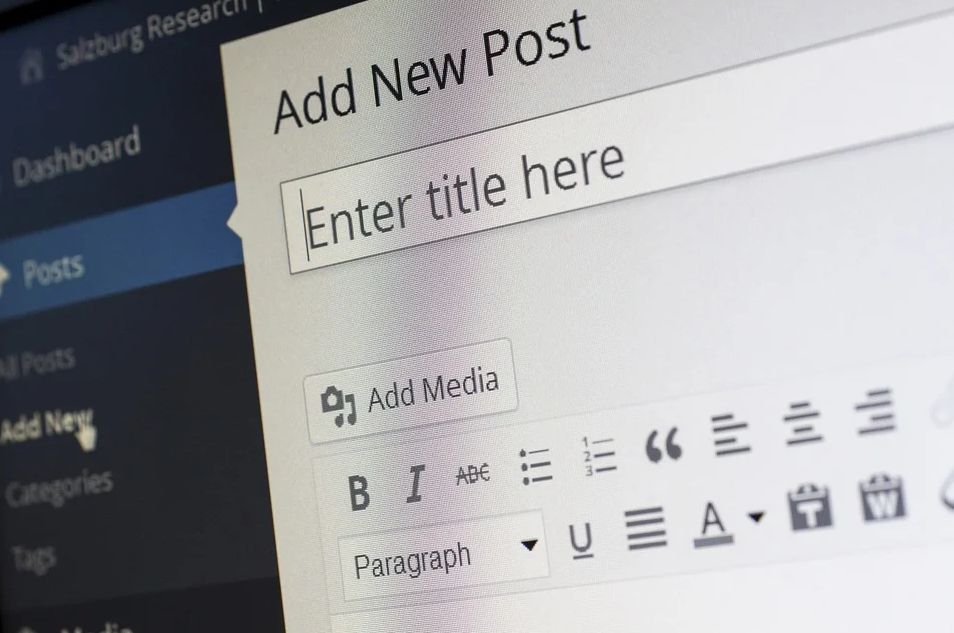
Short content does not perform well in Google search results but if you think that small content can increase your search ranking, then you are thinking wrong. Google see smaller content as thin and underdeveloped content. Google does not value small content and sees a lack of quality in such content. It also thinks that it cannot solve the reader’s problem. It also reduces user engagement and site ranking but some short-form content performs very well in search engines. SEO plugin like Rankmath recommends a minimum of 600 words for an article. if it is more than 600 words in between 700-900 words that will be awesome.
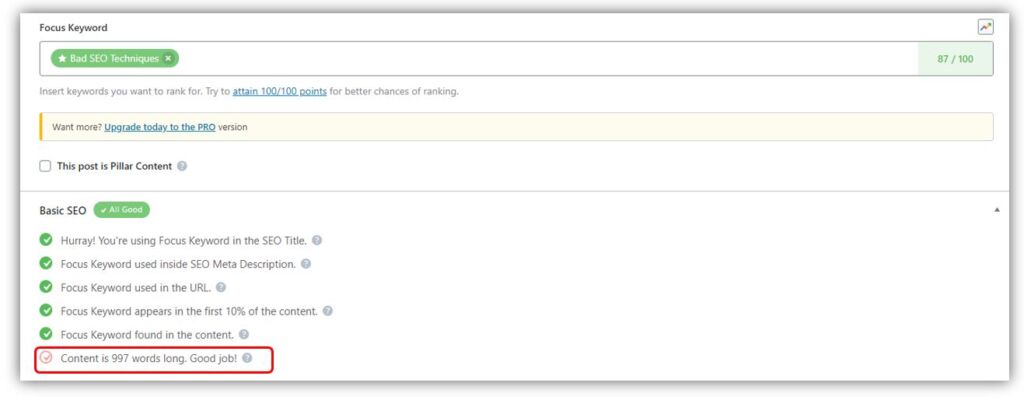
3. Duplicate Content-:
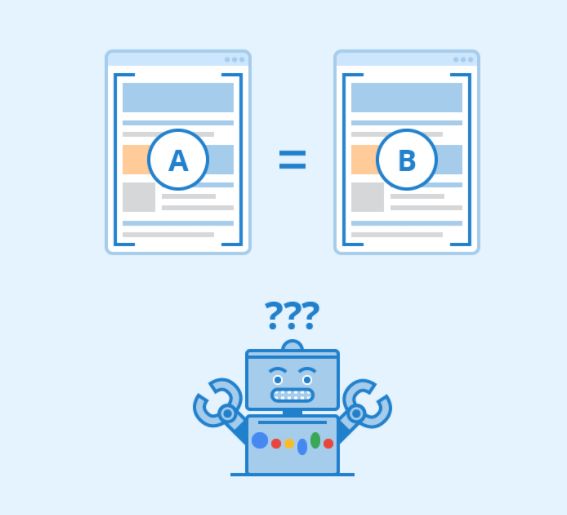
This is the most common mistake made by a website owner or blogger. Duplicate content matches the same or different content. If you fix duplicate content, SEO will be greatly improved. Google likes fresh content and gives a good rank to fresh and unique content. Google has shared an article to deal with duplicate content. Apart from this, Yoast has also shared a good article on duplicate content. If you publish duplicate content on your blog, then you are submitting cockroaches for your blog.
If you are publishing content with two different titles then make one URL canonical. A canonical URL is the perfect solution of duplicate content. choosing one as the canonical URL tells Google and other search engines which one to show in the search results. Canonicals also enable you to point search engines to the original version of an article. For more info on Canonical URL Read this Article. A plugin like Yoast SEO provides the facility to set a Canonical right in WordPress Post Editor.
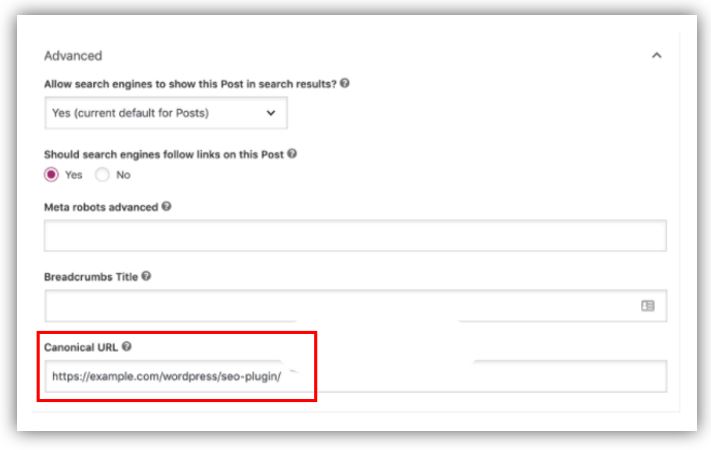
If you have Two Post let say post-A and Post B where A is original and B is duplicate then set URL of Post A in B as Canonical URL. This will help to find out search engine which one original content and should be listed in search results.
4. Over Optimizing Content-:

Content optimization is a good practice to keep your content fresh and up to date but over-optimization makes your content useless. Google never ranks such content. There are many bloggers who over-optimize content to create SEO content which is against Google search engine. Therefore, when you write SEO content, take care of both human readability and search engines. Over-optimization ultimately happens when you focus too much on on-page optimization. Your primary goal should be to create content within SEO guideline.
5. Keyword Stuffing-:

It is very important to include keywords in the content. But if you add keywords to your content everywhere and think that your search rank will increase, then you are absolutely wrong. Excessive use of keywords makes your content spammy content, which is related to bad SEO techniques. Keyword stuffing or overusing Keyword does not boost content ranking, it makes your content unnatural and useless for the user.
6. Buying Backlinks for Sites-:

If you buy backlinks, it refers to bad SEO tactics and you may face a Google penalty because such backlinks include low quality and pornographic sites links. Make backlinks always relevant and well-ranking websites. If you create bad and low-quality backlinks for your site, it can severely damage your SEO performance. The best method to get a quality backlink is to create quality content so that people link it in their article or write a guest post for an authority website under your niche.
7. Forgetting Fast and Mobile-Friendly Experience-:

No one likes to visit a slow loading website. SEO is not limited to content and keywords only. It also depends on performance and design. Google and other search engines prefer fast loading and mobile-friendly sites for better user experience. This is why fast loading and mobile-friendly sites are an important Google ranking factor.
No one likes to visit a slow loading website. SEO is not limited to content and keywords only. It also depends on performance and design. Google and other search engines prefer fast loading and mobile-friendly sites for better user experience. This is why fast loading and mobile-friendly sites are an important Google ranking factor. You can easily convert your WordPress website into a native Android App to provide great mobile experience to your website visitor.
8. Using Non-SEO Friendly URLs-:
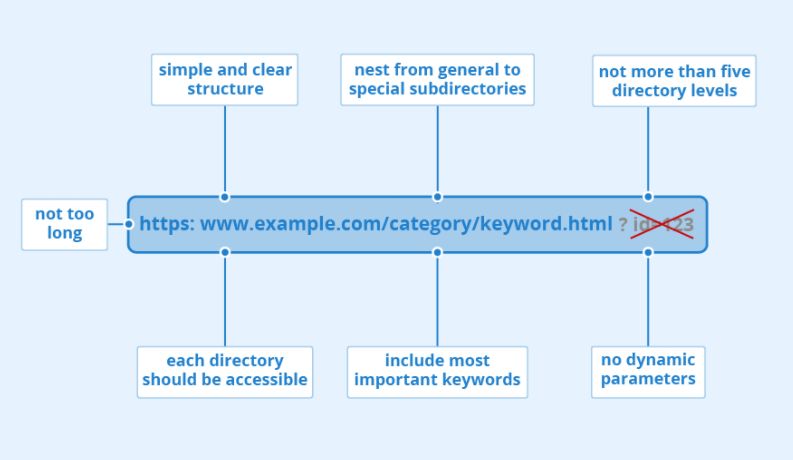
How to Create SEO Friendly URL-:
URL optimizations are a very easy task. This makes your content more SEO friendly and helps search engines understand and rank content better.
How to use Keyword in URL -:
It is very important to insert the Keyword in the URL. So, definitely use your main keyword in the URL. Also, try to put it at the beginning of the URL. But keep in mind one thing, do not repeat your keyword in the URL, it will be called keyword stuffing. Google does not like it at all.
Use Dash(-) to separate Words-:
This is very important in terms of search engine optimization and user readability. Use Dash (-) for word spacing in your URL. Never use underscore (_). Because words separated from underscore are considered a word.
Keep URL Short-:
Keep your URL as short as possible. Also, it should be descriptive. Short URLs are easy to read and write. If there are too many words in the URL to be the same, it will be considered keyword stuffing and may cause your ranking to fall. You can use 4 to 5 words for your URL. If you do more than this, your URL will not be fully visible in the search result.
Always avoid such URLs,
http://mywebsite.com/p=123
http://mywebsite.com/5/10/17/category=SEO/of-page-seo-best-web-optimization
always like this Use URL http://mywebsite.com/page-seo-techniques/
9. Ignoring Keyword Research-:

SEO is completely based on Keyword Research. Keyword research boosts your traffic and makes your content more SEO friendly. Therefore, before writing any article, do keyword research for it. But there are many new bloggers who do not do keyword research and this is a bad SEO content strategy.
10. Not optimizing Title Tags & Meta Descriptions-:
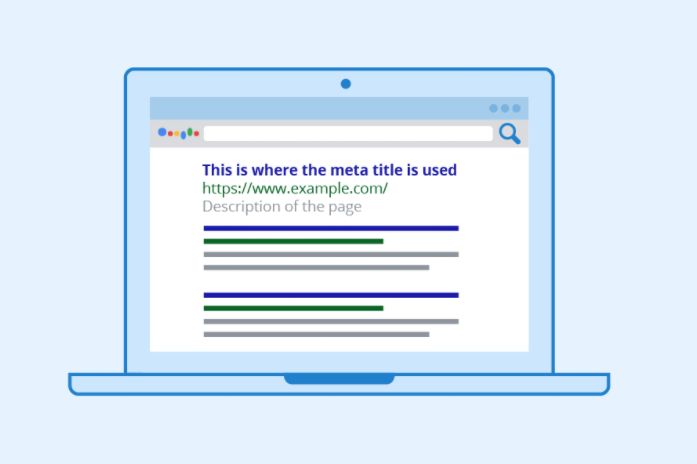
If you do not optimize Title Tags & Meta Descriptions correctly, you lose the opportunity to further improve your content capability. When search engines come to your content for a bot crawling, they first see your Title Tags & Meta Descriptions. If you optimize it properly it will perform well in search engines. Most of the SEO plugin provides a special field to add custom meta description
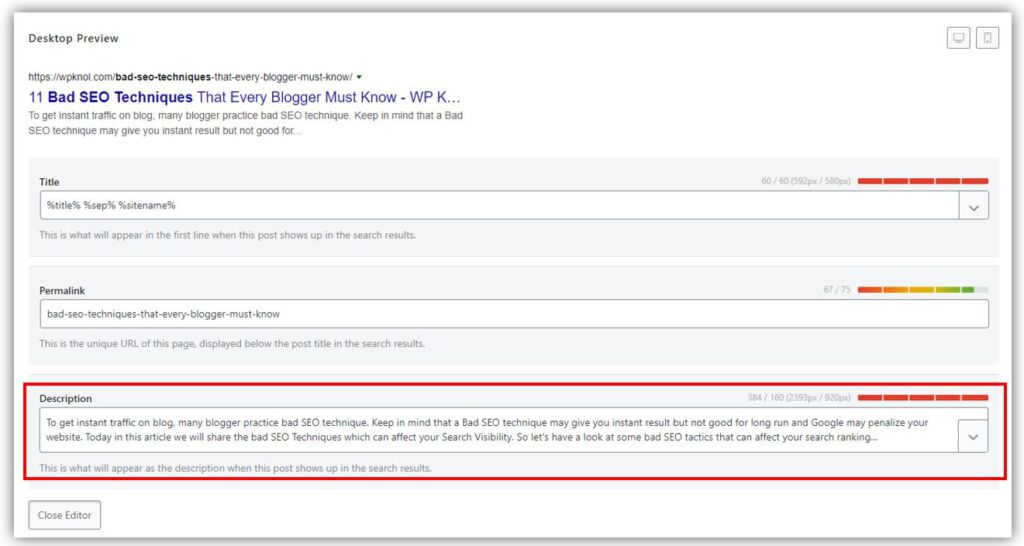
11. Do not publish content on a regular basis-:
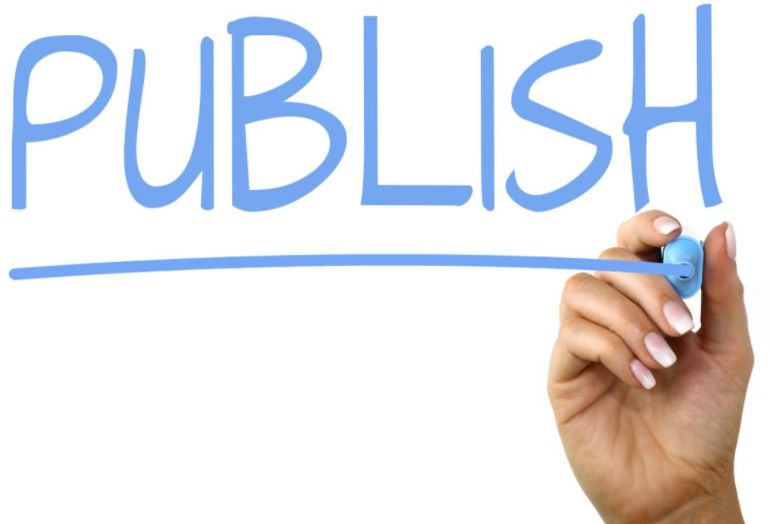
If you do not publish posts on your blog or website regularly, you may not get good results in Google search. As a reader point of view, not publishing content on a regular interval of time is disappointing your reader because a reader comes to your website to get some new info.if you want to get more traffic from search results, then you need to publish content regularly. Bloggers who publish content regularly get good traffic from search engines.
If you like my work, Please Share on Social Media! You can Follow WP knol on Facebook, Twitter, Pinterest and Quora for latest updates.